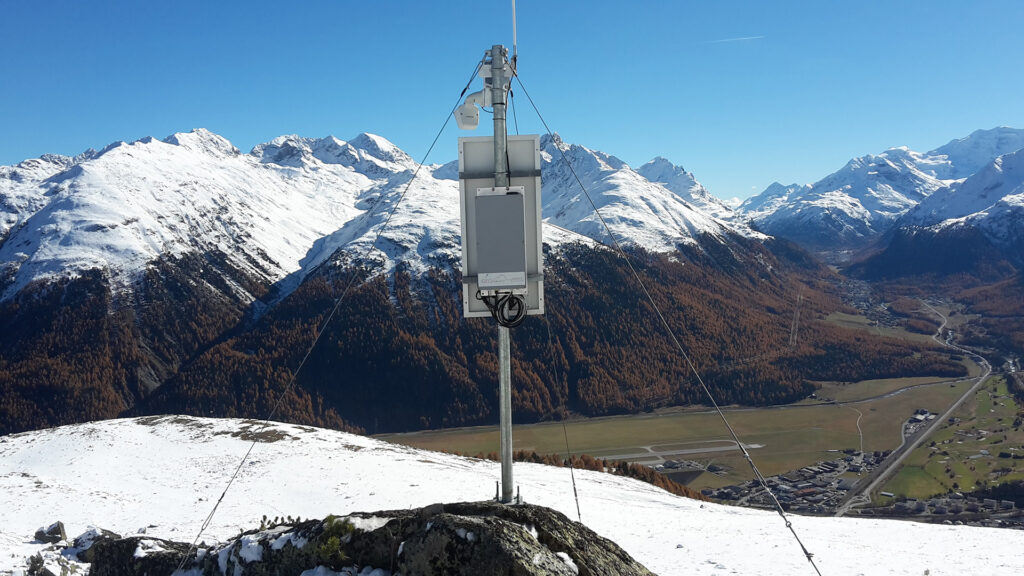PETRA® People Tracking Radar
To monitor endangered areas in order to make sure no people are exposed to controlled released avalanches if visibility is poor

People Tracking Radar
Functional principle
The people tracking radar (Doppler radar) transmits electromagnetic waves that are reflected by objects. The reflected radiation from moving objects has a different frequency than the transmitted radiation (Doppler effect), which is used to detect and track people. The data is sent to a server for processing and visualizing.
Technical data
| PETRA® Specifications | Description |
|---|---|
| Set up | The radar installation is installed so that the area to be monitored is within its visibility and range. It can be mounted at a mast or building. Usually an optical or thermal imaging camera are combined in order to be able to determine whether the radar detected a human or animal. |
| Range | approx. 300 / 800 / 1’200 m (985 / 2.625 / 3.940 ft), depending on model |
| Opening angle | 90° x 20° / 10° |
| Communication | Mobile phone network |
| Display | fully integrated with the Wyssen Avalanche Control Center WAC.3® |
| Power supply | electric grid, solar or fuel cell |

